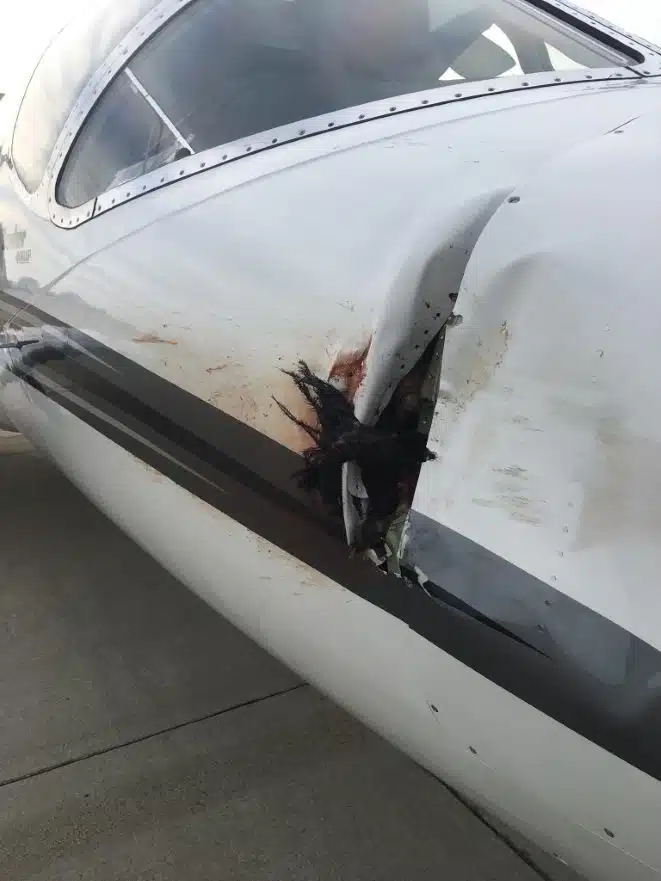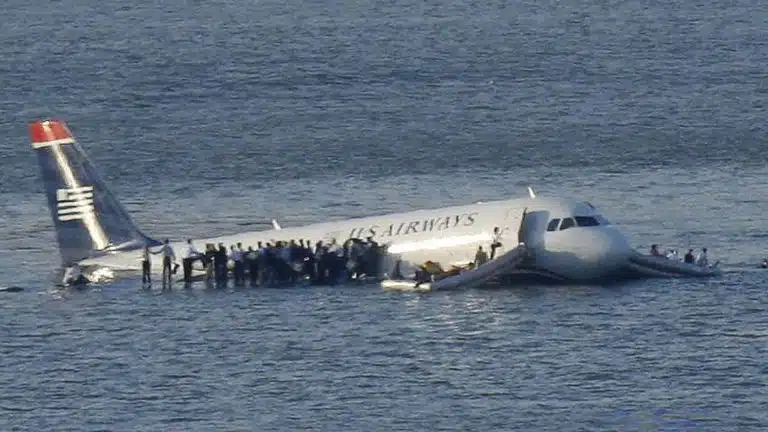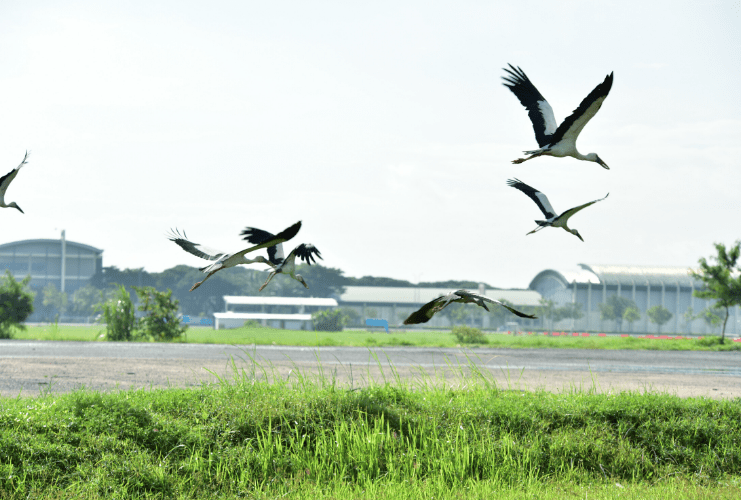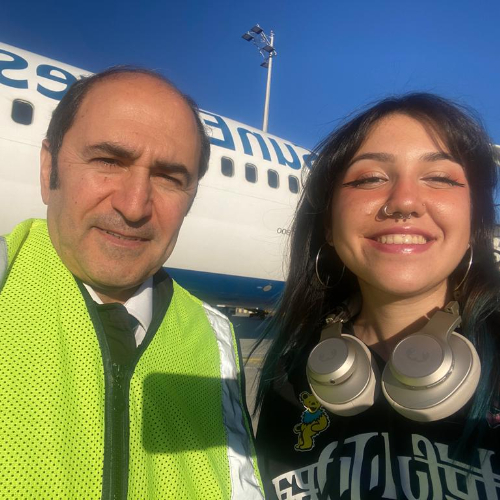Bird strikes are a usual occurrence that airports and airlines deal with regularly. They occur when the birds collide with aircraft during takeoff, landing, or while flying at low altitude. Bird strikes can damage the engines and widescreen while disturbing the plane's structural integrity. It is more effective on smaller aircraft. However, larger aircraft are also challenged by this obstacle. In the worst-case scenario, it could result in losing control of the operation.

Pilots and air safety officials state that paying attention to bird strikes is important since it disturbs the operation's course and the wildlife itself. On January 15, 2009, US Airways Flight 1549, operating with an Airbus A320, struck a flock of birds from New York City's LaGuardia Airport to Charlotte and Seattle. Because of their low altitude during the incident, pilots Chesley "Sully" Sullenberger and Jeffrey Skiles decided to glide the plane to ditch on the Hudson River near Midtown Manhattan. There were no deaths, with the 155 onboard being rescued by the boats. Everything happened in approximately four minutes. The National Transportation Safety Board stated the incident as "the most successful ditching in aviation history."
After this incident, the attention for the bird strikes increased. The reports about wildlife incidents were already coming in until 2009. However, there was a significant increase after the incident. The increase was also a result of better statements from the pilots, tower personnel, mechanics, and others. Between 2009 and 2021, $400 million in federal airport improvement was used to foresee and create a support/prevention system for the wildlife dangers in the airports. Mostly, plans to mitigate them and build refined perimeter fences. The damage to wildlife on aircraft dropped significantly by 2015, with a well-structured plan to decrease the number of instances by biologists.

What Contributes to Bird Strikes
An increase in the number of birds and their attraction to airports is a major part contributing to the bird strikes. Since the airports have open land and are usually surrounded by large grassland areas, they are attractive bird habitats. Also, if there is a water body close, it is most likely that an occurrence of a bird strike may happen. The strike chances will also increase if the airport is built on the birds' migration routes.
How to Prevent Bird Strikes
Pyrotechnics
Airports around the world utilize pyrotechnic methods to drive the birds away. The flash of a gun, which is used in this case, derives the birds away by the noise or the flash it results in. A banger shot from a pistol cartridge can travel 30-40 yards before exploding, and a 12 gauge shotgun can reach 70-100 yards, which creates a great span to get the wildlife away from the course of the operations.

Blocking the Population Growth
For the geese, if the eggs are taken from where they have been laid by the birds, shaking them or covering them in vegetable oil results in a non-successful hatching process, and after a few tries of laying the eggs in the same place and failing, the geese change their place of laying/hatching environment. In this way, the cycle is broken, and the geese do not revisit the same site even though rare occurrences of them may still happen.
Dogs
Some airports utilize dogs like border collies to drive the birds away. Since they are naturally bred to chase them and have an instinct to hunt or catch them, it could be a good way to use nature to derive the other part of nature away rather than use it as a human-made tool. Pigs could also be used since they eat gulls' eggs. If they are repetitively placed in the habitat after a while, the gulls will not set their home there.

Eliminating Vegetation
Eliminating vegetation should not be the first choice since the airport is already built on the natural course of the wildlife; they have been disturbed by humans, and removing the vegetation to eliminate the food resources of the birds strikes another hit to nature. Still, it is considered a useful method as well.
AscendXYZ Avian Radar Network
It is one of the tools proven effective in avoiding bird strikes. It is not solely a radar, allowing users to predict bird activity and minimize the risk. It is easy to use and covers up to 150 square kilometers. It detects bird activity in real-time, and the instant information enables users to act on accurate and precise options. Also, it provides a bird activity forecast with information on the birds' migration routes so the crew is informed before their flight so that incidents can be prevented when the high-risk periods come.
Radar also tells about the bid hot spots while providing historical data to actualize the risk assessment. AscendXYZ has an international, experienced team with industry specialists, and AARN received funding from the European Union's Horizon 2020 research and innovation program under grant agreement No 880308.
Many radar and light technologies detect where the birds are situated rather than disturbing nature. Even though many techniques seem to work, it is always better to avoid their home and route with a radar system or derive them away with a light frequency they can detect on the airplanes; according to the reports, many birds were trying to avoid the aircraft before the impact however they were not fast enough. So detecting before disrupting is crucial to protect both nature and humans simultaneously.
Bomb Threat Cancels Air New Zealand Flight, Delays Passengers » Export Development Canada Secures Aircraft Repossession in Nigeria Under Cape Town Convention » Passengers Encounter Bedbug Infestation on Multiple Turkish Airlines Flights »
Comments (1)

Add Your Comment
SHARE
TAGS
INFORMATIONAL Bird Strikes Incident Birds Animals Emergency SafetyRECENTLY PUBLISHED
 Could You Survive a Plane Crash? The Unlikely Science of Plane Crash Survival
With air travel consistently being heralded as the safest form of public transport, most of us do not board a plane pondering our chances of survival in the event of a crash. But, is it possible to survive one?
INFORMATIONAL
READ MORE »
Could You Survive a Plane Crash? The Unlikely Science of Plane Crash Survival
With air travel consistently being heralded as the safest form of public transport, most of us do not board a plane pondering our chances of survival in the event of a crash. But, is it possible to survive one?
INFORMATIONAL
READ MORE »
 Maldivian Airlines Introduces First-Ever Widebody Aircraft, Plans New China Flights
Maldivian, the government-owned national airline of the Maldives, has just welcomed its first-ever wide body aircraft: the Airbus A330-200. With the new aircraft, the carrier also plans brand-new long haul international flights to China.
NEWS
READ MORE »
Maldivian Airlines Introduces First-Ever Widebody Aircraft, Plans New China Flights
Maldivian, the government-owned national airline of the Maldives, has just welcomed its first-ever wide body aircraft: the Airbus A330-200. With the new aircraft, the carrier also plans brand-new long haul international flights to China.
NEWS
READ MORE »
 Thousands of Flights Impacted as Winter Storm Blair Hits U.S.
Winter Storm Blair has unleashed a huge blast of snow, ice, and freezing temperatures across the Central and Eastern United States.
As of Sunday afternoon, over 6,700 flights and counting have been disrupted. This includes cancelations and significant delays leaving passengers scrambling to change flights and adjust travel plans.
NEWS
READ MORE »
Thousands of Flights Impacted as Winter Storm Blair Hits U.S.
Winter Storm Blair has unleashed a huge blast of snow, ice, and freezing temperatures across the Central and Eastern United States.
As of Sunday afternoon, over 6,700 flights and counting have been disrupted. This includes cancelations and significant delays leaving passengers scrambling to change flights and adjust travel plans.
NEWS
READ MORE »





